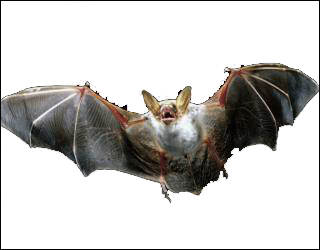
In last week’s blog, the Clark Man shared helpful tips on pest-proofing your home this winter. Keeping rodents, cockroaches and spiders on the outside looking in is important for homeowners, but so is preventing a certain pest of the flying variety: bats.
Like spiders, bats are beneficial to California’s environment, because they feed on insects that threaten vital agricultural crops. However, bats do have an unsavory side to them that can leave people unsettled by their presence.
Bats can be a nuisance with their noise, droppings and urine, which attracts insects. But some bats also carry harmful diseases, such as rabies, which can pose a threat to humans and other animals – including household pets.
Even though bites are rare, bats can transmit rabies, and care should be taken not to handle any bats you may encounter. It’s also a good idea to have your dog or cat vaccinated against rabies, should they encounter a bat.
Bats can enter homes through chimneys that lack protective grates or grills, open windows or doors, under eaves, and into loose siding boards, openings along the roofline or utility vents. Their presence can easily go undetected due to their nocturnal habits.
Dusk is the best time to observe bats exiting a structure, because they feed and are most active then. During the daytime, you can inspect for signs of holes or openings.
Bats also can gain access to a structure through holes that other animals, including squirrels or raccoons, have created. Fortunately, bats are not chewers, and they will not gnaw on electrical wiring like rodents do.
Homeowners can also identify potential bat access points by looking for stain marks left behind by the bat’s body oils, urine and droppings. Bat droppings, or guano, crush easily, are and will include shiny bits of undigested insects. Mouse droppings – called scat – lack those shiny bits. Also, bat droppings never are white or chalky like bird droppings.
The best control method for bats is to deny them access to your home in the first place. Fall is the best time of year to perform the necessary exclusion work on your home, since younger bats have grown enough to fly by then and will be searching for new roosting sites. It’s much easier to prevent a bat problem than it is to remove one after they have set up housekeeping in your attic.
Screens in windows and doors should also be replaced. if torn.
If you think you have a problem with bats around your home, call (800) 936-3339 or drop me an email at clarkcares@clarkpest.com.We will come out and make a proper identification, then provide you with a treatment recommendation.
Until next time I’m the Clark Man, and thanks for helping me keep unwanted pests out of your home.